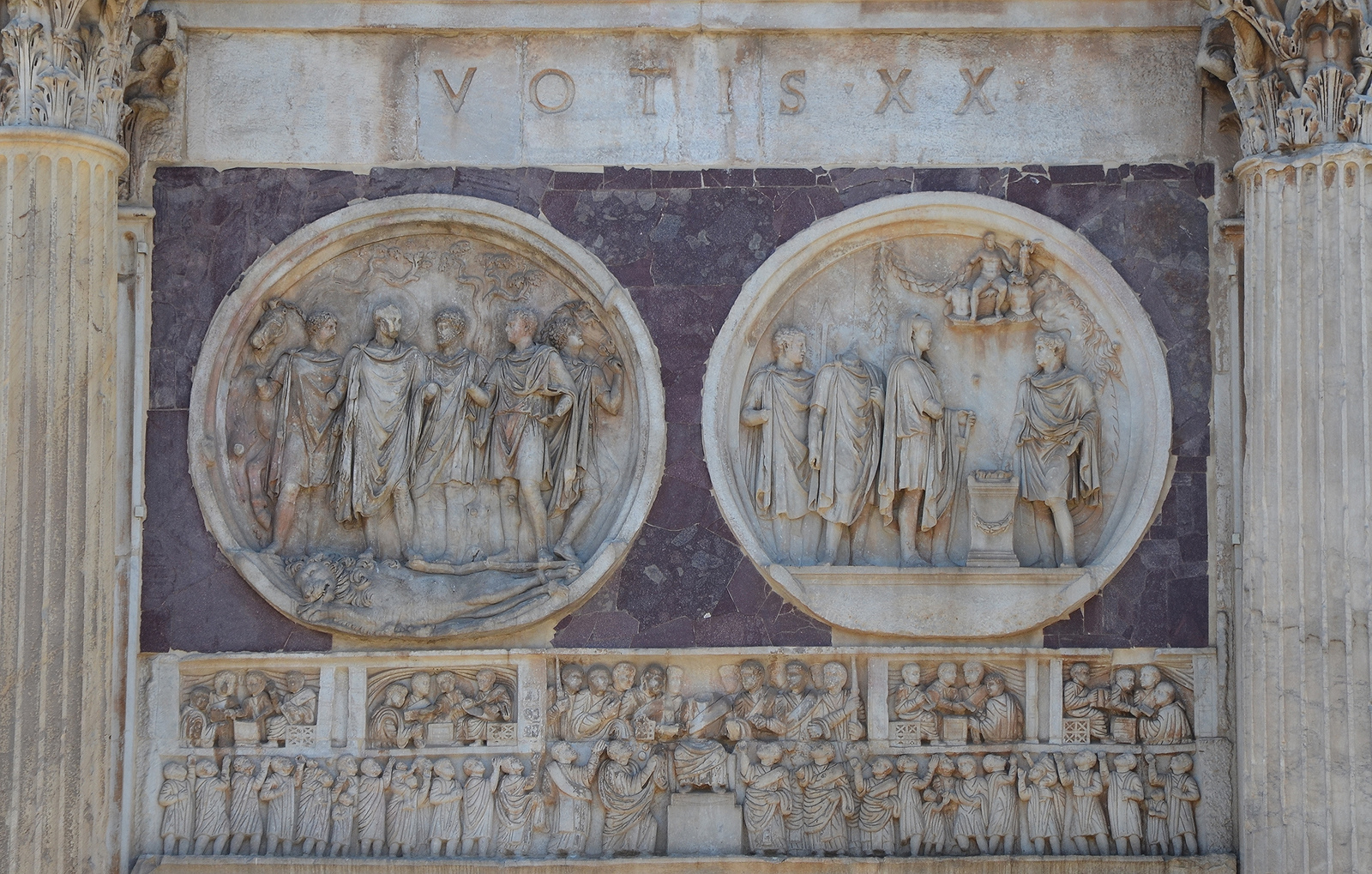The triumphal arch was a type of Roman architectural monument built all over the empire to commemorate military triumphs and other significant events such as the accession of a new emperor. Arches were often erected over major thoroughfares and as the structure had no practical function as a building it was often richly decorated with architectural details, sculpture and commemorative inscriptions, typically using bronze letters. The city of Rome has four outstanding examples of these lasting testaments to Roman vanity. Arch of Constantine I, 315 CE The Arch of Constantine I, erected in c. 315 CE, stands in Rome and commemorates Roman Emperor Constantine’s victory over the Roman tyrant Maxentius on 28th October 312 CE at the battle of Milvian Bridge in Rome. It is the largest surviving Roman triumphal arch and the last great monument of Imperial Rome. The arch is also a tour de force of political propaganda, presenting Constantine as a living continuation of the most successful Roman emperors, renowned for their military victories and good government.

